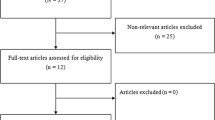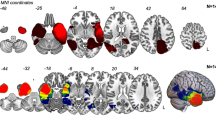Abstract
Background
Diffuse WHO grade II glioma (GIIG) involving the occipital lobe is a rare entity. Its surgical resection remains controversial as it implies inducing a permanent visual deficit. For the first time to our knowledge, we report a consecutive surgical series of patients who underwent an occipital lobectomy for an LGG invading visual structures.
Method
Six right-handed patients harboring a GIIG revealed by seizures (normal examination except a quadrantanopsia in one case) and located within the occipital lobe (4 left and 2 right tumors) were submitted to surgery. Before making this decision, the benefit-to-risk ratio of the resection was extensively discussed with the patient and his/her family, especially concerning the price to pay to remove the tumor, that is, to voluntarily generate a permanent hemianopsia. All the procedures were performed under awake condition using intraoperative electrostimulation, in order to pursue the resection until sensory-motor and/or language structures were encountered.
Findings
An extensive occipital lobectomy was achieved in the six patients, with identification and preservation of sensory-motor pathways in the two cases with a right tumor and detection of language pathways in the four cases with a left tumor. The mean extent of resection was 93% (range: 91–100%). All patients experienced an expected postoperative deficit of the visual field (homonymous hemianopsia). Nonetheless, the six patients resumed a normal social and professional life (KPS at 90 in the 6 cases) with a mean follow-up of 58 months (range: 3–147 months)—with adjuvant treatment in three cases (in addition to a reoperation in two of them).
Conclusions
Our findings suggest that, despite a definitive hemianopsia, an extensive surgical resection can be considered in the rare cases of occipital GIIG involving the primary visual structures, with patients able to maintain a normal life—except regarding the medico-legal problem of driving.



Similar content being viewed by others
References
Bartolomeo P, Schotten MT, Duffau H (2007) Mapping of visuospatial functions during brain surgery: a new tool to prevent unilateral spatial neglect. Neurosurgery 61:E1340
Bauchet L, Rigau V, Mathieu-Daudé H, Figarella-Branger D, Hugues D, Palusseau L, Bauchet F, Fabbro M, Campello C, Capelle L, Durand A, Trétarre B, Frappaz D, Henin D, Menei P, Honnorat J, Segnarbieux F (2007) French brain tumor data bank: methodology and first results on 10,000 cases. J Neurooncol 84:189–199
Berger MS, Deliganis AV, Dobbins JD, Keles GE (1994) The effect of extent of resection on recurrence in patients with low grade cerebral hemisphere gliomas. Cancer 74:1784–1791
Chang E, Clark A, Smith J, Polley M, Chang S, Barbaro N, Parsat AT, McDermott MW, Berger MS (2011) Functional mapping–guided resection of low-grade gliomas in eloquent areas of the brain: improvement of long-term survival. J Neurosurg 114:566–573
Draganski B, Gaser C, Kempermann G, Kuhn HG, Winkler J, Büchel C, May A (2006) Temporal and spatial dynamics of brain structure changes during extensive learning. J Neurosci 26:6314–6317
Duffau H (2007) Contribution of cortical and subcortical electrostimulation in brain glioma surgery: methodological and functional considerations. Neurophysiol Clin 37:373–382
Duffau H (2009) Surgery of low-grade gliomas: towards a ‘functional neurooncology’. Curr Opin Oncol 21:543–549
Duffau H (2009) A personal consecutive series of surgically treated 51 cases of insular WHO grade II glioma: advances and limitations. J Neurosurg 110:696–708
Duffau H, Capelle L (2004) Preferential brain locations of low-grade gliomas: comparison with glioblastomas and review of hypothesis. Cancer 100:2622–2626
Duffau H, Gatignol P, Mandonnet M, Capelle L, Taillandier L (2008) Intraoperative subcortical stimulation mapping of language pathways in a consecutive series of 115 patients with grade II glioma in the left dominant hemisphere. J Neurosurg 109:461–471
Duffau H, Gatignol P, Mandonnet E, Peruzzi P, Tzourio-Mazoyer N, Capelle L (2005) New insights into the anatomo-functional connectivity of the semantic system: a study using cortico-subcortical electrostimulations. Brain 128:797–810
Duffau H, Lopes M, Arthuis F, Bitar A, Sichez JP, Van Effenterre R, Capelle L (2005) Contribution of intraoperative electrical stimulations in surgery of low-grade gliomas: a comparative study between two series without (1985–1996) and with (1996–2003) functional mapping in the same institution. J Neurol Neurosurg Psychiatry 76:845–851
Duffau H, Thiebaut de Schotten M, Mandonnet E (2008) White matter functional connectivity as an additional landmark for dominant temporal lobectomy. J Neurol Neurosurg Psychiatry 79:492–495
Duffau H, Velut S, Mitchell MC, Gatignol P, Capelle L (2004) Intra-operative mapping of the subcortical visual pathways using direct electrical stimulations. Acta Neurochir 146:265–270
Gatignol P, Capelle L, Le Bihan R, Duffau H (2004) Double dissociation between picture naming and comprehension: an electrostimulation study. Neuroreport 15:191–195
Gil-Robles S, Duffau H (2010) Surgical management of World Health Organization Grade II gliomas in eloquent areas: the necessity of preserving a margin around functional structures? Neurosurg Focus 28(2):E8
Kempermann G, Kuhn HG, Gage PH (1997) More hippocampal neurons in adult mice living in an enriched environment. Nature 386:493–495
Laigle-Donadey F, Martin-Duverneuil N, Lejeune J, Crinière E, Capelle L, Duffau H, Cornu P, Broët P, Kujas M, Mokhtari K, Carpentier A, Sanson M, Hoang-Xuan K, Thillet J, Delattre JY (2004) Correlations between molecular profile and radiologic pattern in oligodendroglial tumors. Neurology 63:2360–2362
Lee HW, Hong SB, Seo DW, Tae WS, Hong SC (2000) Mapping of functional organization in human visual cortex: electrical cortical stimulation. Neurology 54:849–854
Maldonado I, Moritz-Gasser S, Duffau H (in press) Does the left superior longitudinal fascicle subserve language semantics? Brain Struct Funct
Mandonnet E, Gatignol P, Duffau H (2009) Evidence for an occipito-temporal tract underlying visual recognition in picture naming. Clin Neurol Neurosurg 111:601–605
Martino J, Taillandier L, Moritz-Gasser S, Gatignol P, Duffau H (2009) Re-operation is a safe and effective therapeutic strategy in recurrent WHO grade II gliomas within eloquent areas. Acta Neurochir (Wien) 151:427–436
Martino J, Brogna C, Gil Robles S, Vergani F, Duffau H (2010) Anatomic dissection of the inferior fronto-occipital fasciculus revisited in the lights of brain stimulation data. Cortex 46:691–699
Metz-Lutz MN, Kremin H, Deloche G, Hannequin D, Ferrand L, Perrier D (1991) Standardisation d’un test de dénomination orale: contrôle des effets de l’âge, du sexe et du niveau de scolarité chez les sujets adultes normaux. Rev Neuropsychol 1:73–95
Nguyen HS, Sundaram SV, Mosier KM, Cohen-Gadol AA (2011) A method to map the visual cortex during an awake craniotomy. J Neurosurg 114:922–926
Persson AI, Petritsch C, Swartling FJ, Itsara M, Sim FJ, Auvergne R, Goldenberg DD, Vandenberg SR, Nguyen KN, Yakovenko S, Ayers-Ringler J, Nishiyama A, Stallcup WB, Berger MS, Bergers G, McKnight TR, Goldman SA, Weiss WA (2010) Non-stem cell origin for oligodendroglioma. Cancer Cell 18:669–682
Rivier F, Clarke S (1997) Cytochrome oxidase, acetylcholinesterase, and NADPH-diaphorase staining in human supratemporal and insular cortex: evidence for multiple auditory areas. NeuroImage 6:288–304
Smith JS, Chang EF, Lamborn KR, Chang SM, Prados MD, Cha S, Tihan T, Vandenberg S, McDermott MW, Berger MS (2008) Role of extent of resection in the long-term outcome of low-grade hemispheric gliomas. J Clin Oncol 26:1338–1345
Soffietti R, Baumert BG, Bello L, von Deimling A, Duffau H, Frénay M, Grisold W, Grant R, Graus F, Hoang-Xuan K, Klein M, Melin B, Rees J, Siegal T, Smits A, Stupp R, Wick W (2010) Guidelines on management of low-grade gliomas: report of an EFNS-EANO Task Force. Eur J Neurol 17:1124–1133
Thiebaut de Schotten M, Urbanski M, Duffau H, Volle E, Lévy R, Dubois B, Bartolomeo P (2005) Direct evidence for a parietal-frontal pathway subserving spatial awareness in humans. Science 309:2226–2228
Vergani F, Martino J, Gozé C, Rigau V, Duffau H (2011) WHO grade II gliomas and subventricular zone: anatomical, genetic and clinical considerations. Neurosurgery PMID 21273932
Winston GP, Yogarajah M, Symms MR, McEvoy AW, Micallef C, Duncan JS (2011) Diffusion tensor imaging tractography to visualize the relationship of the optic radiation to epileptogenic lesions prior to neurosurgery. Epilepsia. doi:10.1111/j.1528-1167.2011.03088.x
Yordanova Y, Moritz-Gasser S, Duffau H (2011) Awake surgery for WHO grade II gliomas within “noneloquent” areas in the left dominant hemisphere: toward a “supratotal” resection. J Neurosurg PMID 21548750
Conflicts of interest
None.
Author information
Authors and Affiliations
Corresponding author
Additional information
Comment
Professor Hugues Duffau of Montpellier is a world leader in the functional connectivity of the human brain. And how did he achieve this? It was by realising that awake craniotomy is a wonderful research window on the living human brain and that intraoperative stimulation mapping provides hard evidence on how different areas of the brain communicate with each other—just for the knowledge for those neurosurgeons who still think that awake craniotomy is a barbarous act.
Professor Duffau now reports near total resections of six occipital WHO grade II diffuse gliomas using awake craniotomy and intraoperative cortical and subcortical stimulation mapping. He found that the ensuing permanent homonymous hemianopia allowed return to almost all previous activities and that the patients accepted the deficit as a price for the near total removal. This is controversial in many neurosurgical minds and raises several questions such as:
(1) What degree of neurological deficit is acceptable—and by whom—when in very experinced hands the outcome is not cure but delay of malignant transformation?
(2) How prepared are our patients to mentally process something that is controversial even among neurosurgeons?
(3) How to act optimally when terrified patients and eager media expect god-like foresight and procedures?
I find this report conceptually highly important with long-term impact on the field of resective surgery of lesions of the brain.
Juha E Jääskeläinen
Kuopio, Finland
Rights and permissions
About this article
Cite this article
Viegas, C., Moritz-Gasser, S., Rigau, V. et al. Occipital WHO grade II gliomas: oncological, surgical and functional considerations. Acta Neurochir 153, 1907–1917 (2011). https://doi.org/10.1007/s00701-011-1125-z
Received:
Accepted:
Published:
Issue Date:
DOI: https://doi.org/10.1007/s00701-011-1125-z




